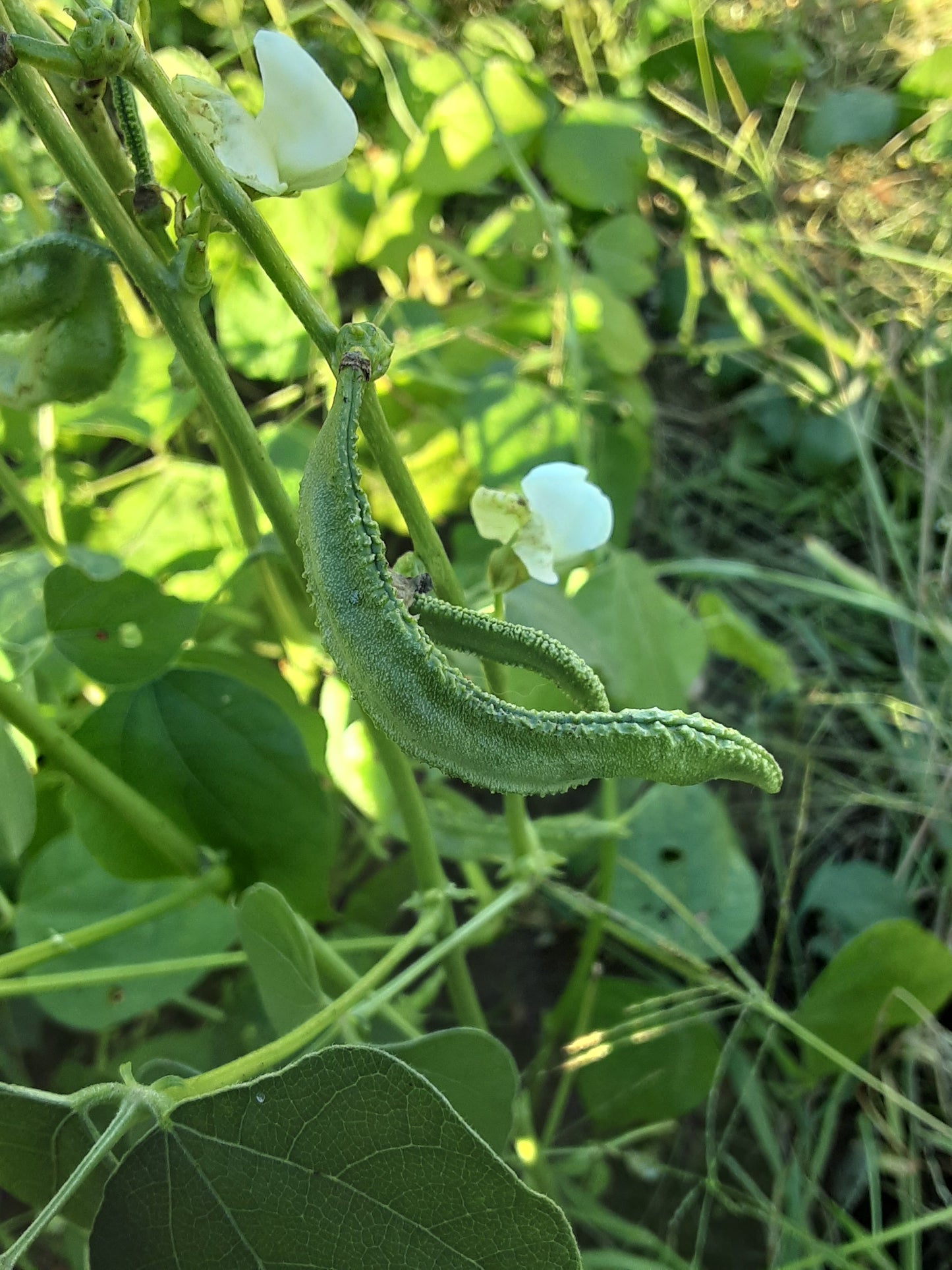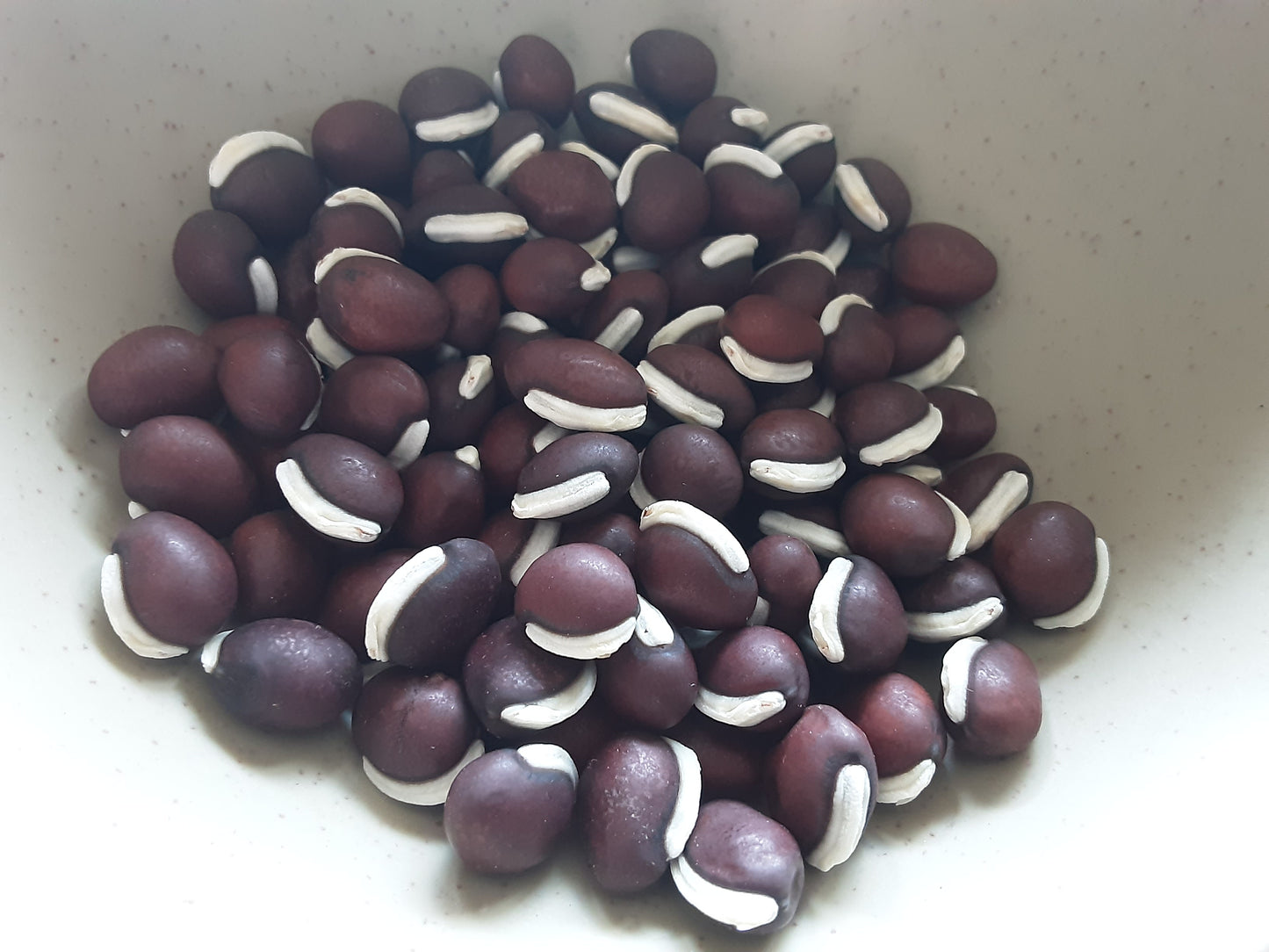Great Lakes Staple Seeds
India Bush Hyacinth Bean
India Bush Hyacinth Bean
Couldn't load pickup availability
(Lablab purpureus); aka Lablab, Dolichos bean, Australian pea; Bush habit; Minimum 20 seeds
A true bush hyacinth bean, India's fragrant white flowers appear on cluster spikes approximately 35 days after sowing, flat, 3" dark green pods follow.
When cooked the immature pods are akin to bean-flavored snow peas. Plants continue to bloom even after many pods are allowed to mature for seed and are ever-bearing if kept picked. Cultivated as one would with bush beans, direct sow when soil temperatures are consistently above 70°F for optimal germination and emergence.
Native to Africa, hyacinth beans are grown for consumption throughout Asia and Africa. All parts of the plant are used, from the leaves, flowers, pods, and seeds, to even the root that is baked. Regardless of the recipe, the presence of cyanogenic glycosides, especially in the hard, dry seeds, mean proper preparation is required to reduce the toxicity. This usually involves multiple changes of water. However, a note of interest is that the lectins in common red kidney beans make them toxic as well without proper preparation. Hyacinth beans are a nutritious and common staple on tables around the world, so don't be afraid to try them at least once. An online browser search leads to quite a few appealing recipes!
Stir fry the pods: Avarakkai Poriyal
Make a curry: Avarakkai Masala Curry
Eat the beans!: African Lablab Bean Stew





